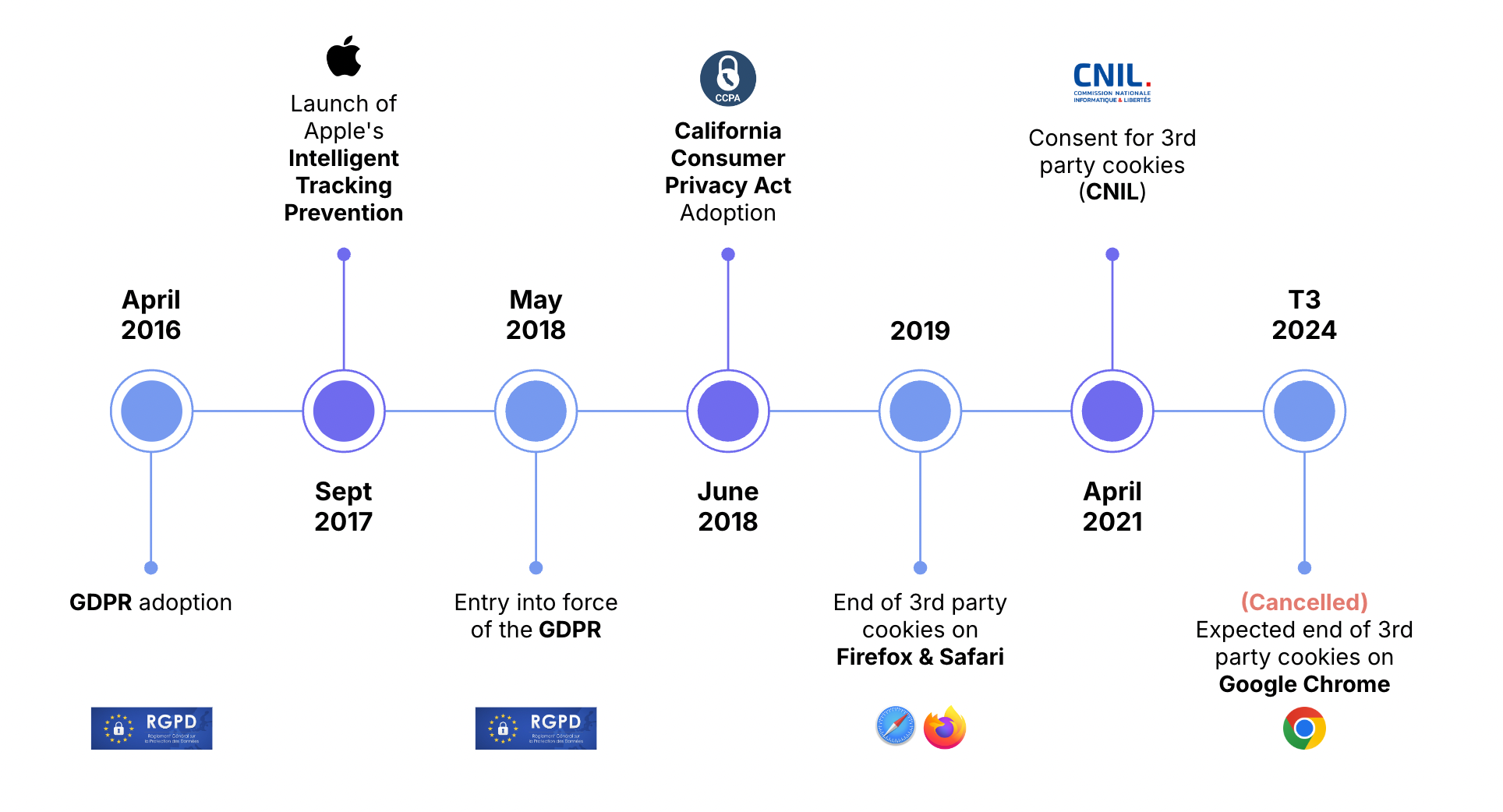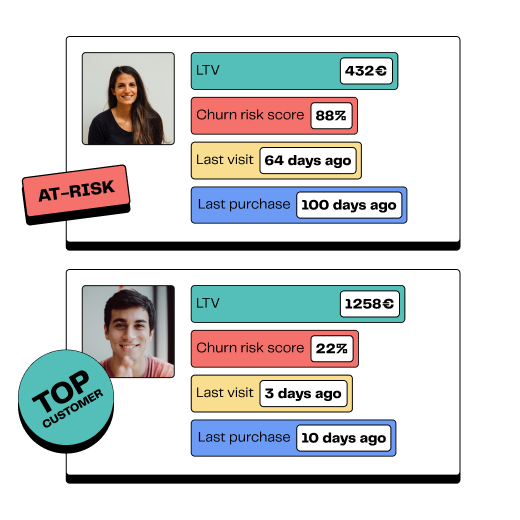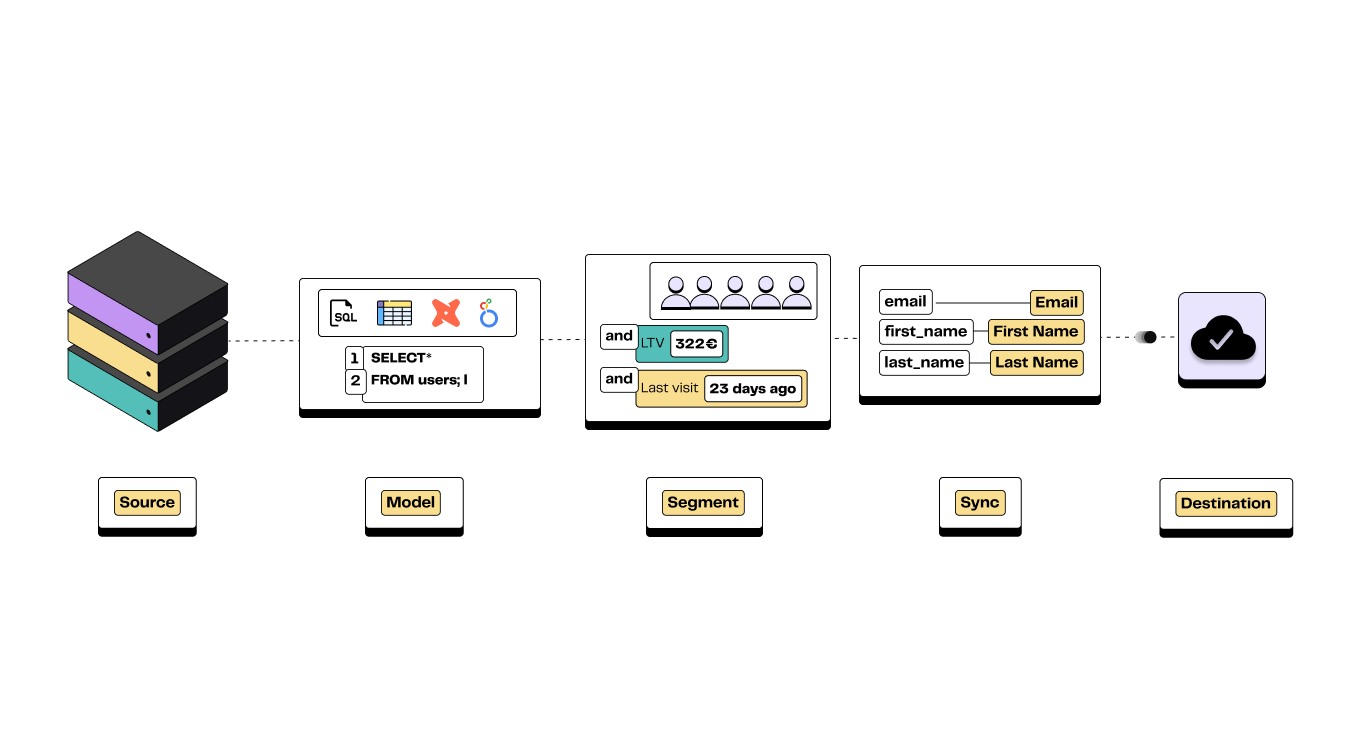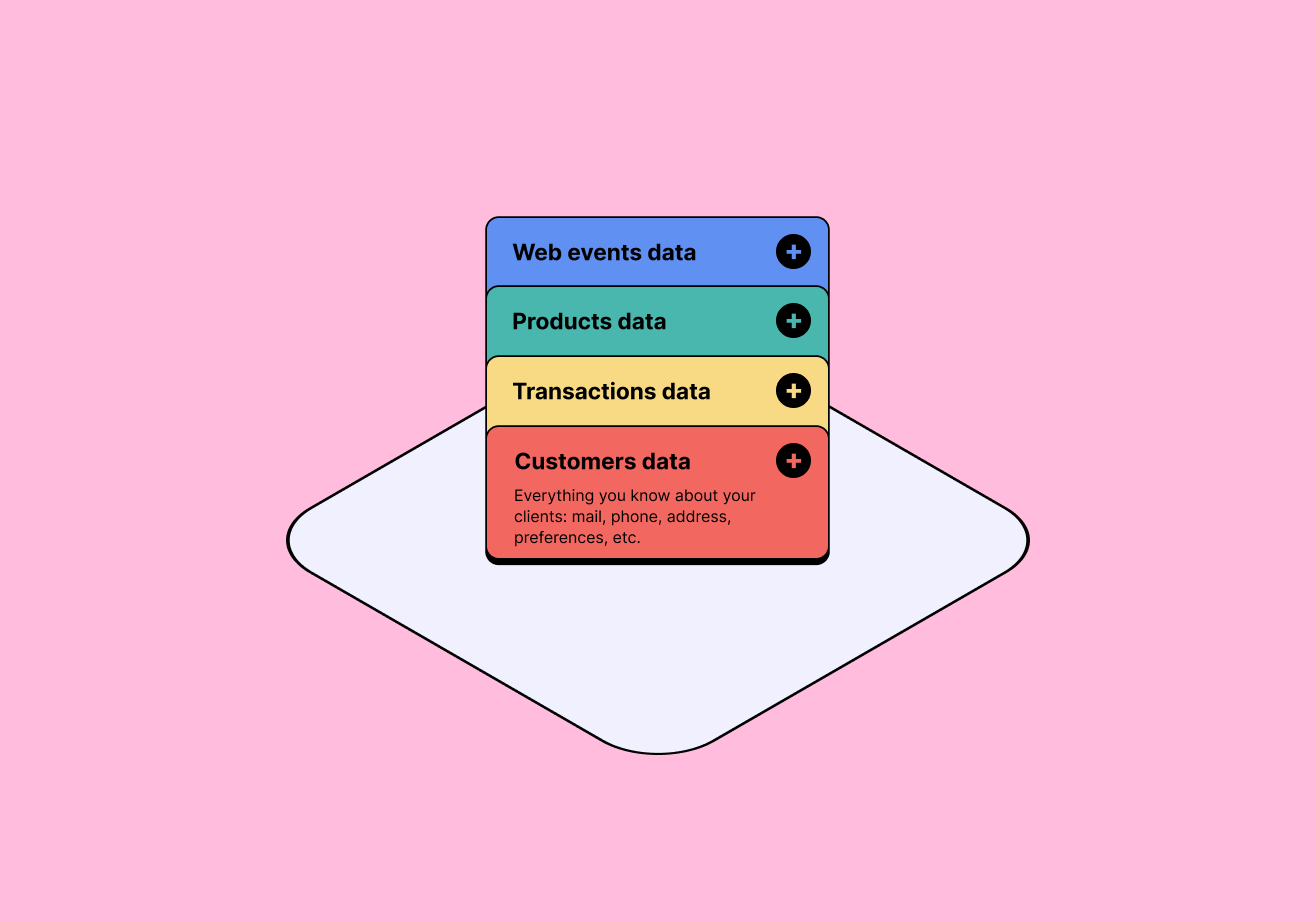
Use cases: Data for multichannel performance
6min • Last updated on Nov 3, 2025

Aïda Mansour
Operation Manager
Recent privacy evolutions, both technical and regulatory, have highlighted the importance of the use of first party data.
Yet, beyond adopting a defensive strategy linked to these regulations, relying on your own data and activate it is a real source of performance for your marketing operations.
👉 Learn how to boost your marketing performance in a cookieless world, by sending first-party data to all your marketing destinations using DinMo.
What can you do with first-party data?
Defensive axis: be compliant with privacy evolutions
Big techs are moving away from the third-party cookies, progressively increasing the limits on traditional tracking methods. This is the case with Apple, which has implemented consent on mobile IDs since 2021 – implying significant restrictions on in-app tracking – and which has already banned third-party cookies from its Safari browser since 2017.
Google had also announced the end of third-party cookies in 2024 for Chrome — a move that sent shockwaves through the marketing world. In reality, little has actually changed since the announcement in 2023.
Google admitted facing challenges in meeting the expectations of advertisers, the regulator (CMA), and the developers involved in the Privacy Sandbox project. Several delays followed, and the deadline was pushed back multiple times before ultimately being dropped in 2025 as part of an antitrust investigation.

Timeline: how third-party cookies are scrambling
These evolutions have a deep impact on performance, especially targeting capabilities, and on the measurement of marketing operations. To tackle this challenge, controlling your first-party data shows up as one of the key solutions on the market. This enables cookieless strategies, such as retargeting and performance measurement to more and more platforms, including the fast-growing retail media.
Thus, companies successfully controlling their own data will be less impacted by coming evolutions. McKinsey estimates that companies that do not figure out how to rely on their first-party data may have to spend 10 to 20 percent more on acquisition strategies in the coming years.
Offensive axis: increase performances through new use cases
Yet, first-party data should not be viewed solely as a means to limit the impacts of privacy restrictions. There is a real opportunity to develop more performing acquisition strategies, thanks to a better understanding of the customer journey.
This can be achieved in particular through a well-executed lifecycle marketing strategy. A recent BCG study reveals that sales can be improved by 18% when a company successfully controls its data.
Here are some use cases:
Send high-value audiences for acquisition optimisation
Information on your top consumers (high lifetime value, recent buyers, ...) are available in your CRM. This highly qualified data allows you to significantly improve your ROAS (Return On Ad Spend) of acquisition campaigns using the lookalike algorithm of media platforms.

360° overview of a customer
Limit media expenses and deliver a better user experience
Your customers search for relevant information online before making a purchase, following the ROPO effect. Consequently, it is estimated that 50% of offline sales are influenced by online information and campaigns.
Yet, retargeting campaigns continue to reach offline buyers, as long as offline events are not sent to media platforms. Thanks to first-party data import to your platforms, you can take into account these purchases, in order to limit media expenses and deliver a better user experience.
Pilot campaign thanks to advanced KPIs to improve your ROI
If your business is based on the transformation of leads, you may prefer to optimise your acquisition on real sales rather than on the acquisition of leads. If you are an e-merchant, you may wish to manage your campaigns on the margin to better develop your profitability.
If you are a retailer, you probably want to optimise both online and offline conversions to better measure the return on investment of your campaigns.
Hopefully, all these use cases become possible if you develop a robust strategy to use properly your first-party data.
Develop customer loyalty and create value through CRM-to-media use cases
A better understanding of your customers shows up as essential to optimise your advertising investments. Thanks to purchase history and consumption habits, it becomes easier to send the right message at the right time to the right audience.
Are you selling consumables? Delayed retargeting is made for you. Are your sales cyclical? Using your first-party data allows you to target consumers according to purchase seasonality, without worrying about the cookies’ lifetime.
Is your customer engagement declining? You can develop engagement scores and send different messages to your current customers to prevent churn.

DinMo predictives attributes
How can you adopt first-party data strategies?
Maximise your data collection while respecting privacy regulations
Optimal data collection is key to performing strategies based on first-party data and still too frequent errors can limit it. For instance, from a simple opt-in collection by channel to a collection by purpose, volumes of collected data can change significantly.
Yet, collecting a maximum of data is pointless if you are not allowed to leverage it for your marketing use cases. To respect consumer consent, include the appropriate mentions in your opt-in forms and privacy policies.
Moreover, to develop both the customer experience and the convergence of online and CRM data, think beyond cookie banners and consider using a Preference Center.
Consolidate data in your data warehouse and send it everywhere
After having successfully collected lots of data from various sources, two main approaches exist today to consolidate data and activate it in your marketing platforms:
Firstly, you can use a packaged CDP, that centralises all your data and send it to your platforms. This solution is easy to deploy but costly in terms of licenses and less flexible in terms of use cases.
If you already use a data warehouse as your single source of truth, you can create a custom platform, which best suits your needs and is based on your existing technical stack.
These strategies can rely on multiple tools, from Reverse ETL tools to Composable CDP like DinMo.
Indeed, DinMo puts all your first party data in motion, from your data warehouse to all your destinations, to create value everywhere. It helps you to navigate surely into a cookieless world.

Core components of Reverse ETL
In a nutshell, considering the structuring developments in the market, the significant opportunities to be seized and the sharply decreasing complexity of mastering data thanks to cloud technologies, leveraging first party data will become more and more important in the coming months.
It is advisable to prepare as soon as possible because the development of a strategy in this area takes time and requires significant hindsight.
Do not hesitate to contact us if you wish to be assisted!





















